Five Sacred Trees - BSN/PN
Composer: Williams, John
Publisher: Hal Leonard
Edition: 9100
$24.99
Five Sacred Trees
for bassoon and piano
by John Williams (b. 1932) - American composer and conductor
for bassoon and piano
by John Williams (b. 1932) - American composer and conductor
I. Eó Mugna
II. Tortan
III. Eó Rossa
IV. Craeb Uisnig
V. Dathi
Written for Judith LeClair, commissioned by the Philharmonic Society of New York for its 150th Anniversary. This is the second edition of this work.
From the composer:
As we become increasingly aware of the damage done by the destruction of our forests, it is illuminating to discover that our ancestors, any thousands of years ago, prayed to the spirits before felling a tree. One prayer was appropriate for a maple, another for the elm, and son on.
The English poet, Robert Graves, writes of these prayers, which I have been unable to find, but which, nonetheless, have moved me to composer this music about trees featuring the bassoon, itself a tree.
This is all the result of a request for a concerto by the great bassoonist, Judith LeClair, whose unparalleled artistry is a mystery and a wonder in itself.
I. Eo Munga, the great oak, whose roots extend to Connla's Well int he "otherworld", stands guard over what is the source of the River Shannon and the font of all wisdom. The well is probably the source of all music, too. The inspiration for this movement is the Irish Uilleann pipe, a distant ancestor of the bassoon, whose music evokes the spirit of Munga and the sacred well.
II. Tortan is a tree that has been associated with witches and as a result, the fiddle appears, sawing away, as it is conjoined with the music of the bassoon. The Irish Bodhran drum assists.
III. The Tree of Ross (or Eo Rossa) is a yew, and although the yew is often referred to as a symbol of death and destruction, the Tree of Ross is the subject of much rhapsodizing in the literature. It is referred to as "a mother's good", "Diadem of angels" and "faggot of the sages". Hence, the lyrical character of this movement, wherein the bassoon incants and is accompanied by the harp.
IV. Craeb Uisnig is an ash and has been described by Robert Graves as a source of strife. Thus, a ghostly battle, where all that is heard as the phantoms struggle, is the snapping of twigs on the forest floor.
V. Dathi, which purportedly exercised authority over the Poets, wand was the last tree to fall, is the subject for the close of the piece. The bassoon soliloquizes as it ponders the secrets of the trees.


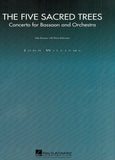
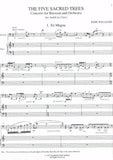
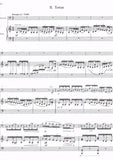
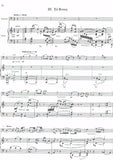
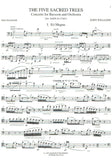




Share this item: